"Not everything that matters can be measured. Not everything that we can measure matters."
V. F. Ridgway
V. F. Ridgway

Preliminary
Analysis
This report helps profile candidates on 4 quadrant scale helping align expectations on subject-career choices.

Multi-dimensional
Intelligence Test
This report helps profile candidates on their intelligences or interests across 8 domains.

Multi-dimensional
Leadership Evaluation
This report helps profile candidates on 4 quadrant scale helping align expectations on subject-career choices.

Multi-dimensional
Aptitude Test
This report helps profile candidates on 4 quadrant scale helping align expectations on subject-career choices.

Experiential
Self & Peer Assessment
This report helps profile candidates on 4 quadrant scale helping align expectations on subject-career choices.

Preliminary Analysis
This initial analysis helps students evaluate their subject and career choices by assessing their alignment and level of certainty. Using a self-assessment, candidates are mapped on two axes—self-directed vs. influenced and unsure vs. sure—to uncover insights into their decision-making process, guiding them towards informed choices.
What is Preliminary Analysis:
At MILLS™, we recognize that selecting the right subject and career is a critical decision for every student. Our Preliminary Analysis uses a simple self-assessment to evaluate two key factors: subject-career alignment and level of certainty. Students are mapped on two axes: the vertical axis evaluates whether they are self-directed or influenced by others, while the horizontal axis assesses how sure or unsure they feel about their subject and career choices. Based on this, students are placed within one of four quadrants: Validate, Review, Explore, and Uncertain, helping them gain clarity on their current position and guiding them towards a more aligned future path.
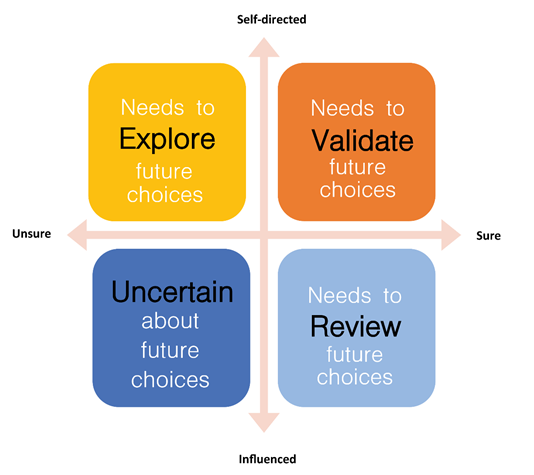
How Preliminary Analysis helps?
This Analysis provides students with valuable insights by positioning them on two axes—self-directed vs. influenced and unsure vs. sure. Which helps students understand their subject and career choices by evaluating their confidence and independence in making those decisions.
Validate: Students in this quadrant are sure about their choices and self-directed, meaning they have a clear sense of direction without external influence.
Review: This quadrant indicates students are sure about their choices but may be influenced by others. They benefit from reviewing their decisions to ensure they align with their own interests and aspirations.
Explore: Students in this quadrant may feel unsure about their choices but are self-directed. They are open to exploring new options and gaining clarity on their true career fit.
Uncertain: Students here are both unsure about their choices and may be influenced by others. Further exploration and guidance are needed to help them make more confident and informed decisions.
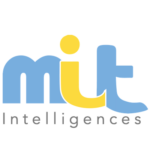
Multi-dimensional Intelligence Test
This self-assessment helps students identify their unique blend of strengths across different intelligences. By assessing these abilities, students gain insights into how they learn and solve problems, enabling them to align their strengths with the right subjects and career paths.
What is MIT Self-assessment?
This self-assessment is an online tool designed to help students evaluate their unique blend of multiple intelligences. Based on Howard Gardner’s theory, this self-assessment measures a student’s cognitive and behavioral strengths across eight distinct intelligences. The results provide insights into how students process information, learn, and solve problems, enabling them to better understand their natural abilities and make informed decisions about their academic and career choices.
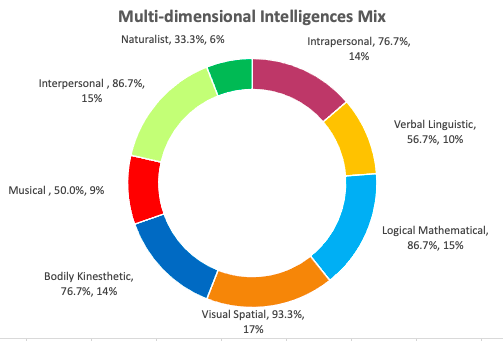
How does MIT help students?
The MIT Self-Assessment helps students recognize their intellectual strengths and learning styles, offering valuable guidance for selecting the right subjects and career paths. By measuring multiple intelligences, students gain a clearer understanding of areas where they excel, allowing them to align their educational choices with their strengths. This personalized approach empowers students to make confident decisions, fostering success, engagement, and fulfillment in both academic and professional environments.

Verbal Linguistic
"Explore your interest in reading, writing, and communication, an intelligence that empowers us to express ideas with clarity."

Interpersonal
"Discover your interest in connecting, understanding, and influencing others, an intelligence essential for leadership and teamwork."

Intrapersonal
"Uncover your interest in self-awareness and personal strengths, an intelligence that helps make informed decisions and set meaningful goals."

Visual Spatial
"Discover your interest in visualizing and manipulating 2D-3D objects, an intelligence which helps further careers in design and architecture."

Musical
"Discover your interest in rhythm and sound recognition skills, an intelligence essential for careers in music, performance, and sound design."

Naturalist
"Explore your interest in connecting with the natural world and your intelligence to observe, classify, and interact with the environment."

Body Kinesthetic
"Uncover your interest level in physical skills and learn how this intelligence can enhance creativity, learning, and problem-solving."

Logical Mathematical
"Evaluate your interest in thinking critically and solving complex problems, ideal for fields like science, engineering, and finance."
Intelligence Planets

Interpersonal Intelligence (People Smart)
What is Interpersonal Intelligence?
Interpersonal Intelligence is the ability to understand and relate to others effectively. Individuals with strong interpersonal intelligence excel in social settings, forming connections easily, reading people’s emotions and reactions, and responding appropriately. They are excellent communicators and often take on leadership roles or thrive in team environments. This intelligence is crucial for roles in business, teaching, sales, management, and any profession where interacting with others is key.
Why It Matters:
Students with strong interpersonal intelligence tend to be great team players and natural leaders, making them well-suited for careers that involve collaboration and understanding diverse perspectives.
Common Strengths:
Socially adept & empathetic; Good communication & leadership skills; Ability to influence & persuade others
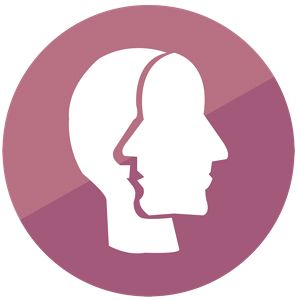
Intrapersonal Intelligence (Self-Smart)
What is Intrapersonal Intelligence?
Intrapersonal Intelligence is the ability to understand and reflect on one’s own emotions, thoughts, strengths, weaknesses, and motivations. Individuals with high intrapersonal intelligence are introspective and self-motivated, able to set personal goals and work independently. This intelligence plays a critical role in self-awareness, personal development, and goal-setting, making it essential for careers that require self-management, such as entrepreneurship, writing, and psychology.
Why It Matters:
This intelligence helps students develop a clear sense of purpose, guiding them to make decisions that align with their personal values and long-term goals.
Common Strengths:
Self-reflection & emotional intelligence; Strong focus & concentration; Ability to work independently & set meaningful goals

Bodily-Kinesthetic Intelligence (Body Smart)
What is Bodily-Kinesthetic Intelligence?
Bodily-Kinesthetic Intelligence is the ability to use one’s body to perform tasks with precision and coordination. Individuals with this intelligence are often highly skilled in physical activities, whether it be sports, performing arts, or manual tasks such as surgery or engineering. They excel in hands-on learning environments, making them well-suited for fields in sports, dance, surgery, mechanics, and art.
Why It Matters:
Students with strong bodily-kinesthetic intelligence often excel in practical, hands-on learning situations. They are more likely to thrive in careers that require physical activity and manual dexterity.
Common Strengths:
Excellent coordination & dexterity; Ability to express ideas through movement; Enjoyment of physical challenges, such as sports or performing arts.

Visual-Spatial Intelligence (Picture Smart)
What is Visual-Spatial Intelligence?
Visual-Spatial Intelligence involves the ability to perceive and manipulate objects in space. Individuals with high visual-spatial intelligence are skilled at visualising 3D images and thinking about how objects relate to each other in space. This intelligence is essential for careers in architecture, engineering, design, art, and navigation.
Why It Matters:
Students with this intelligence excel in tasks that require creating mental images or physical models, making them ideal for roles in creative and technical fields that involve spatial planning and design.
Common Strengths:
Strong visualisation skills; Artistic & design abilities; Excellent spatial awareness & ability to navigate complex environments.

Verbal Linguistic Intelligence (Word Smart)
What is Verbal Linguistic Intelligence?
Verbal Linguistic Intelligence is the ability to use language effectively, both in writing and speaking. Individuals with strong linguistic intelligence are able to express themselves clearly and persuasively, enjoy reading and writing, and have a strong command over language. This intelligence is crucial for careers in writing, journalism, teaching, law, and public speaking.
Why It Matters:
Students with linguistic intelligence excel in activities that involve storytelling, writing, and debating. This intelligence is important for anyone pursuing a career that requires clear communication and the ability to persuade others.
Common Strengths:
Strong vocabulary & writing skills; Excellent communication & public speaking; Ability to learn new languages & analyze text

Logical-Mathematical Intelligence (Number Smart)
What is Logical-Mathematical Intelligence?
Logical-Mathematical Intelligence refers to the ability to reason logically, recognize patterns, and solve complex mathematical problems. People with high logical-mathematical intelligence are skilled at abstract thinking, working with numbers, and solving puzzles. This intelligence is important for fields such as science, mathematics, engineering, and technology.
Why It Matters:
Students with logical-mathematical intelligence excel in structured problem-solving and abstract reasoning, making them ideal for careers that involve critical thinking, analysis, and scientific discovery.
Common Strengths:
Strong problem-solving abilities; Comfort with abstract concepts & numbers; Analytical thinking & logical reasoning.

Musical Intelligence (Music Smart)
What is Musical Intelligence?
Musical Intelligence is the ability to understand, create, and appreciate music, including rhythm, melody, and tone. Individuals with this intelligence have a natural affinity for music and may excel in playing instruments, composing music, or singing. This intelligence is important for careers in music, performing arts, and sound engineering.
Why It Matters:
Students with strong musical intelligence have a natural talent for understanding and creating music, making them suited for creative and performance-based careers that rely on rhythm, sound, and emotional expression.
Common Strengths:
Ability to play musical instruments; High auditory memory & sensitivity to sound; Strong rhythm & musical composition skills.

Naturalistic Intelligence (Nature Smart)
What is Naturalistic Intelligence?
Naturalistic Intelligence is the ability to recognise and understand patterns in nature, including plants, animals, and the environment. People with high naturalistic intelligence have a deep connection with the natural world and often excel in careers related to biology, environmental science, zoology, and botany.
Why It Matters:
Students with naturalistic intelligence are naturally inclined to appreciate and care for the environment. This intelligence is valuable for fields that require observation and analysis of the natural world, such as conservation, ecology, and agriculture.
Common Strengths:
Ability to classify & categorise natural objects; Sensitivity to environmental changes; Strong observation skills in nature-related fields.

Multi-dimensional Leadership Evaluation
The Multi-Dimensional Leadership Evaluation (MLE) is designed to assess students’ leadership capabilities across three key clusters: Compassion, Connection, and Courage. Each cluster focuses on specific competencies that contribute to effective leadership. By evaluating these clusters, the MLE helps students gain a deeper understanding of their leadership potential and provides guidance on how to develop these competencies for future success.
What is MLE Self-assessment?
The Multi-Dimensional Leadership Evaluation (MLE) assesses students’ leadership skills across three core clusters, each consisting of three competencies. Within each competency, there are multiple behaviors that students demonstrate during their interactions with others. The goal of this self-assessment is to help students map their leadership abilities, allowing them to enhance their communication, collaboration, and teamwork skills. By understanding and improving these key competencies, students can become more effective leaders in both academic and professional settings.
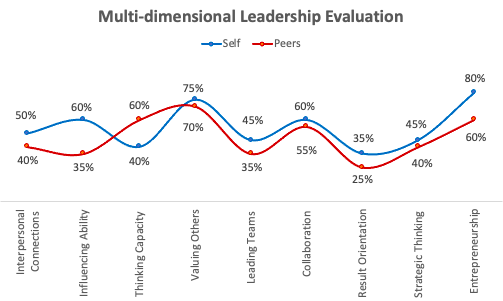
How does MLE help students?
The MLE is crucial for students because it provides a comprehensive view of their leadership skills, highlighting strengths and areas for improvement. By developing self-awareness within the three cluster: Compassion, Connection, and Courage, students are better equipped to lead teams, solve problems collaboratively, and manage challenges effectively. The evaluation also prepares them for future leadership roles by enhancing their self-awareness and helping them build the skills needed for success in their education and future careers.

Behavioural Clusters
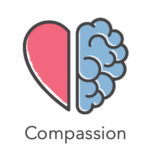
Compassion

Interpersonal Connections
The ability to understand and relate to others by recognizing their feelings, thoughts, and perspectives. Building effective rapport with people through impactful communication that fosters trust and facilitates collaboration.

Influencing Abiility
The capacity to persuade and inspire others to support a common cause. Strong influencers can align others with shared goals through effective communication and by demonstrating confidence in ideas.

Thinking Capacity
The ability to think critically and creatively to solve problems and make decisions that benefit individuals and teams. Strong thinkers can process complex information and devise strategies that enable success.
Compassion
Compassion involves building and maintaining meaningful connections with others, which is critical for both individual and collective success. The ability to show sensitivity, value diversity, and respect others strengthens relationships and helps in securing support from peers, colleagues, and leaders. Compassionate individuals are skilled at creating environments where others feel understood, valued, and motivated to work together towards shared goals.
Drivers of this Cluster:
- Managing self while showing sensitivity towards others
- Reducing complexity while devising new solutions
- Winning support from others while building a bond
Barriers of this Cluster:
- Blaming others and not sharing the blame to solve problems
- Superficial respect and sensitivity towards others
- Absence of self love
Components or Sub-skills of this Cluster:
There are three sub-skills which represent Compassion or The passion to win support):
- Interpersonal Connections
- Influencing Ability
- Thinking Capacity
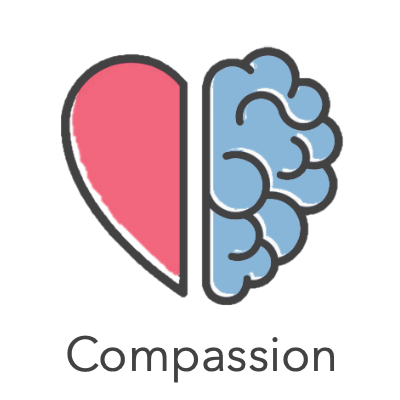

Connection

Valuing Others
This report helps profile candidates on 4 quadrant scale helping align expectations on subject-career choices.

Leading Teams
This report helps profile candidates on 4 quadrant scale helping align expectations on subject-career choices.

Collaboration
This report helps profile candidates on 4 quadrant scale helping align expectations on subject-career choices.
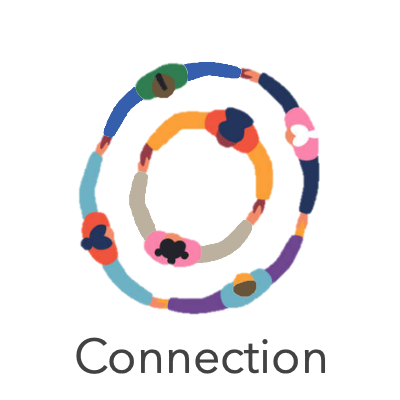
Connection: The Ability to Create Sustainable Value
Connection is about the ability to foster environments where teamwork and collaboration flourish. This skill cluster represents a person’s capacity to engage, empower, and develop others within a group setting to work collectively towards shared success. Effective communicators in this cluster can guide their teams towards greater productivity and sustainable outcomes.
Drivers of this Cluster:
- Developing an environment which promotes learning
- Striving to become a role model for others to follow
- Managing others in a participatory manner
Barriers of this Cluster:
- Shaming others due to their unique differences
- Low Self Worth driving inability to create connection
- Integral fear of disconnection driving connection
Components or Sub-skills of this Cluster:
There are three sub-skills which represent Connection or Ability to create sustainable group-value:
- Valuing Others
- Leading Teams
- Collaboration

Courage

Result Orientation
This report helps profile candidates on 4 quadrant scale helping align expectations on subject-career choices.

Strategic Thinking
This report helps profile candidates on 4 quadrant scale helping align expectations on subject-career choices.

Entrepreneurship
This report helps profile candidates on 4 quadrant scale helping align expectations on subject-career choices.
Courage: Collective Problem-Solving Capacity
Courage involves the ability to tackle challenges, take risks, and make tough decisions in pursuit of collective goals. It represents an individual’s willingness to venture beyond their comfort zone, experiment with new ideas, and persist through adversity. Courageous individuals approach problems with determination, driving results even in the face of obstacles.
Drivers of this Cluster:
- Staying focused on the prize while taking challenges head on
- Maintaining a ‘big picture view’ with ‘future of work’
- Taking calculated risks with swift decision making
Barriers of this Cluster:
- Shying away from failure or its prospects for self and others
- Not taking responsibility for the problems faced
- Having a myopic view, without the context or challenges
Components or Sub-skills of this Cluster:
There are three sub-skills which represent Courage or Capacity to collectively solve problems:
- Result Oriented
- Strategic Thinking
- Entrepreneurship
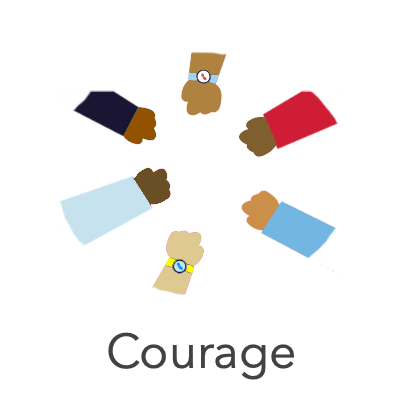

Leadership Competencies
-
 Interpersonal
Interpersonal
-
 Influencing Ability
Influencing Ability
-
 Thinking Capacity
Thinking Capacity
-
 Valuing Others
Valuing Others
-
 Leading Teams
Leading Teams
-
 Collaboration
Collaboration
-
 Result Orientation
Result Orientation
-
 Strategic Thinking
Strategic Thinking
-
 Entrepreneurship
Entrepreneurship

Interpersonal Connections
The ability to understand and relate to others by recognizing their feelings, thoughts, and perspectives. Building effective rapport with people fosters trust and facilitates collaboration.
Example: A leader who recognizes individual strengths and adapts their approach to meet team members’ needs.

Influencing Ability
The capacity to persuade and inspire others to support a common cause. Strong influencers can align others with shared goals through effective communication and by demonstrating confidence in ideas.
Example: A team leader who motivates their colleagues to achieve higher performance levels through clear and persuasive communication.

Thinking Capacity
The ability to think critically and creatively to solve problems and make decisions that benefit individuals and teams. Strong thinkers can process complex information and devise strategies that enable success.
Example: A strategist who analyzes challenges and develops innovative solutions that guide the team forward.

Valuing Others
Recognizing and appreciating the unique qualities and contributions of others. Individuals with this skill make people feel valued, respected, and integral to the team’s success.
Example: A manager who actively listens to employees and incorporates their feedback into decision-making processes.

Leading Teams
The ability to guide, inspire, and motivate a group to achieve shared objectives. Effective leaders encourage collaboration, build trust, and empower others to perform at their best.
Example: A project manager who sets clear goals and fosters a collaborative spirit within their team to drive success.

Collaboration
Working harmoniously with others, sharing responsibilities, and leveraging collective strengths to achieve common goals. Collaborators excel in team environments and are effective in negotiating differences to find mutually beneficial solutions.
Example: A group member who mediates a conflict and ensures the team works together seamlessly to meet deadlines.

Result Orientation
A relentless focus on achieving measurable outcomes, regardless of the difficulties encountered. Individuals with this skill set are determined, driven, and persistently work towards meeting goals.
Example: A salesperson who remains motivated and continues to meet targets, even after facing rejection or challenges in the market.

Strategic Thinking
The ability to think long-term and create strategies that guide individuals and teams towards success. Strategic thinkers can envision the future and plan effectively, aligning actions with broader goals and objectives.
Example: A CEO who sets the long-term vision for the company and leads their team towards achieving the milestones that drive success.

Entrepreneurship
The capacity to identify opportunities, take calculated risks, and innovate to solve problems or create new value. Entrepreneurs are often characterized by their creativity, resourcefulness, and determination to drive progress.
Example: A startup founder who identifies market gaps, adapts quickly, and successfully launches a new product to meet customer needs.

Multi-dimensional Aptitude Test
The Multi-Dimensional Aptitude Test (MAT) assesses an individual’s inherent potential across key aptitudes, helping students identify their natural strengths and talents. By evaluating these aptitudes, MAT provides insights into the right career paths based on each student’s unique abilities, enhancing their academic and professional success.
What is MAT or Cognitive Assessment?
The Multi-Dimensional Aptitude Test (MAT) is a comprehensive assessment that measures six core aptitudes identified by psychologists, such as numerical ability, logical reasoning, and visual-spatial skills, among others. Going beyond these six areas, the MAT includes a 14-factor assessment that dives deeper into the sub-aptitudes, offering a more granular analysis of each student’s strengths. The results are then compared to those of peers in the same age group, allowing students to see how their aptitudes align with their chosen career paths and make better-informed decisions about their future.
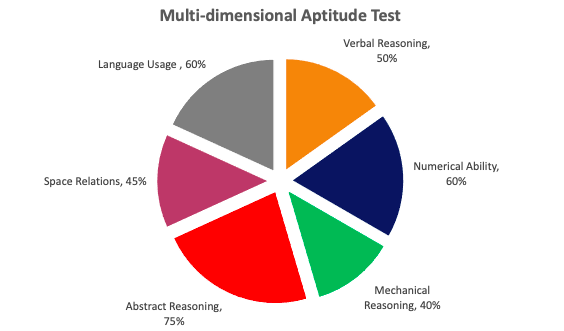
How does MAT help students?
The MAT helps students by providing them with a clear picture of their innate abilities, offering insights into areas where they excel and areas that may need further development. By identifying the right mix of aptitudes, students can align their academic choices and career goals with their natural talents. With a detailed report categorizing their aptitude scores as against age and grade medians, students gain a deeper understanding of their potential relevant to the population they compete against. This helps them view themselves beyond grades and make informed decisions, ensuring that their chosen field of study or career path is the best fit for their skills.

Critical Thinking
Critical thinking is the ability to analyze, evaluate, and synthesize information logically. It involves a structured approach to problem-solving, where individuals use evidence and reasoning to make informed decisions. Critical thinkers excel at breaking down complex problems into manageable parts, identifying patterns, and making sound judgments based on logic and evidence. This cluster is essential for fields that require precision, analysis, and strategic thinking, such as science, engineering, business, and law. Students with strong critical thinking aptitudes are skilled at making well-reasoned decisions, navigating complex issues, and applying logical analysis to real-world challenges.
Aptitudes included: Verbal Reasoning, Numerical Ability, Mechanical Reasoning

Verbal Reasoning
To Organize ideas and concepts in their minds without the use of exhaustive step by step instructions.
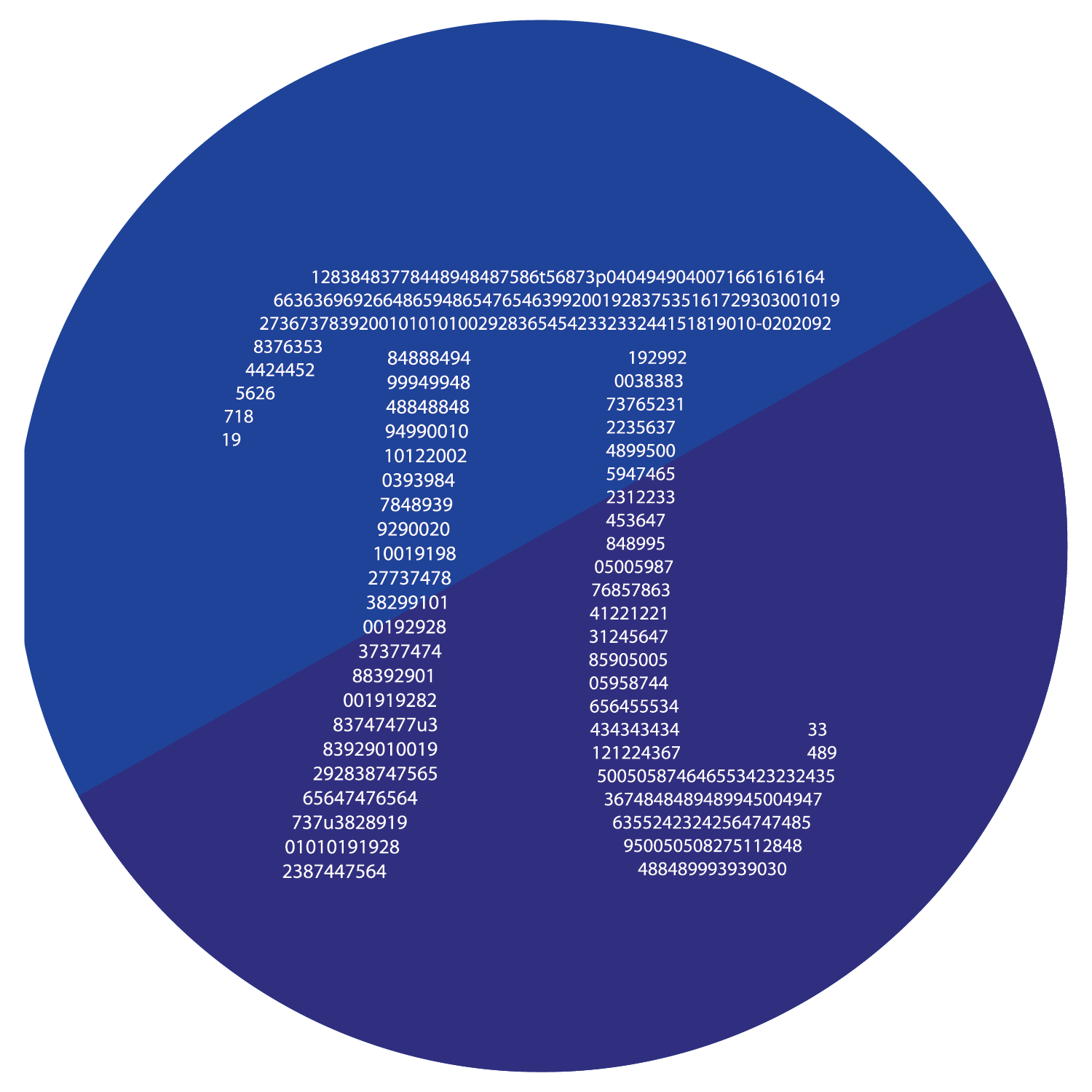
Numerical Ability
To think quantitatively and appreciate number relationships in their daily lives.
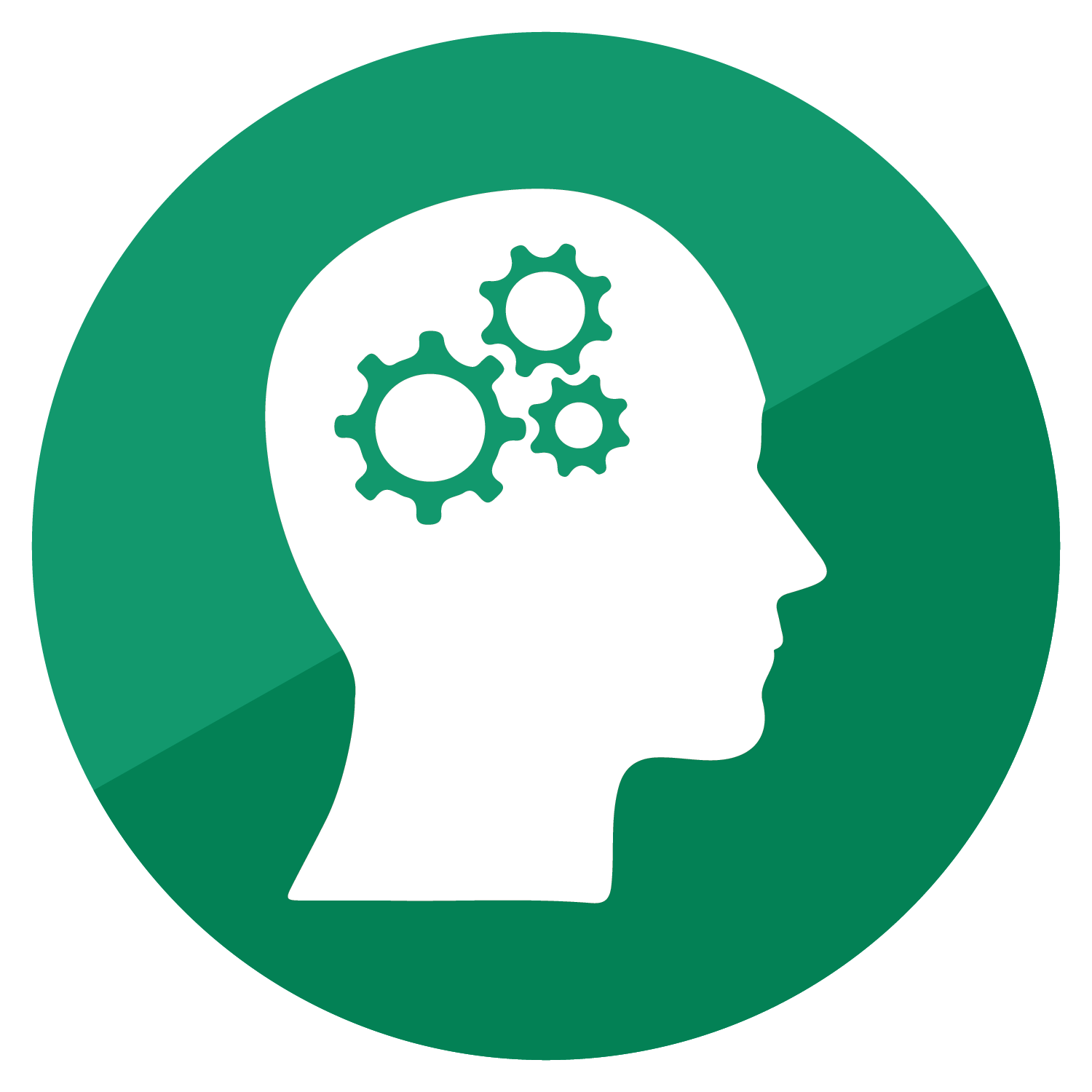
Mechanical Reasoning
To apply mechanical concepts and principles to systems and processes.
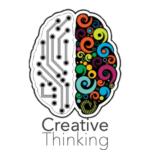
Creative Thinking
Creative thinking involves the ability to think beyond conventional boundaries, encouraging innovative approaches to problem-solving, expression, and design. It enables individuals to visualize abstract concepts, generate new ideas, and express thoughts in creative ways. Those who excel in creative thinking aptitudes can approach challenges from unique angles, combining imagination with practical skills to develop fresh, original solutions. This cluster is particularly important in fields that require artistic, design, or conceptual thinking, as well as in professions where problem-solving is central to success. Students with strong creative thinking aptitudes often excel in environments that encourage experimentation, self-expression, and innovation.
Aptitudes included: Abstract Reasoning, Space Relations, Language Usage
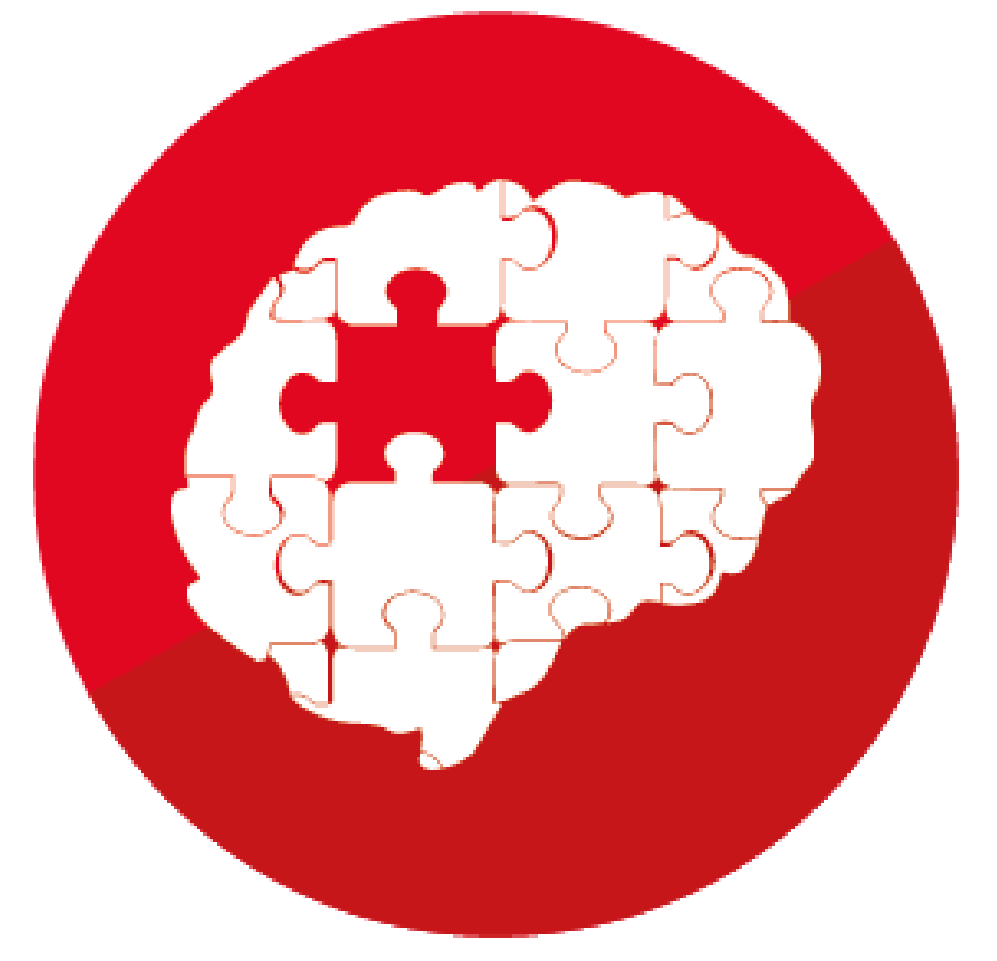
Abstract Reasoning
Draw quick connections with reason in limited time with incomplete information and synthesize.
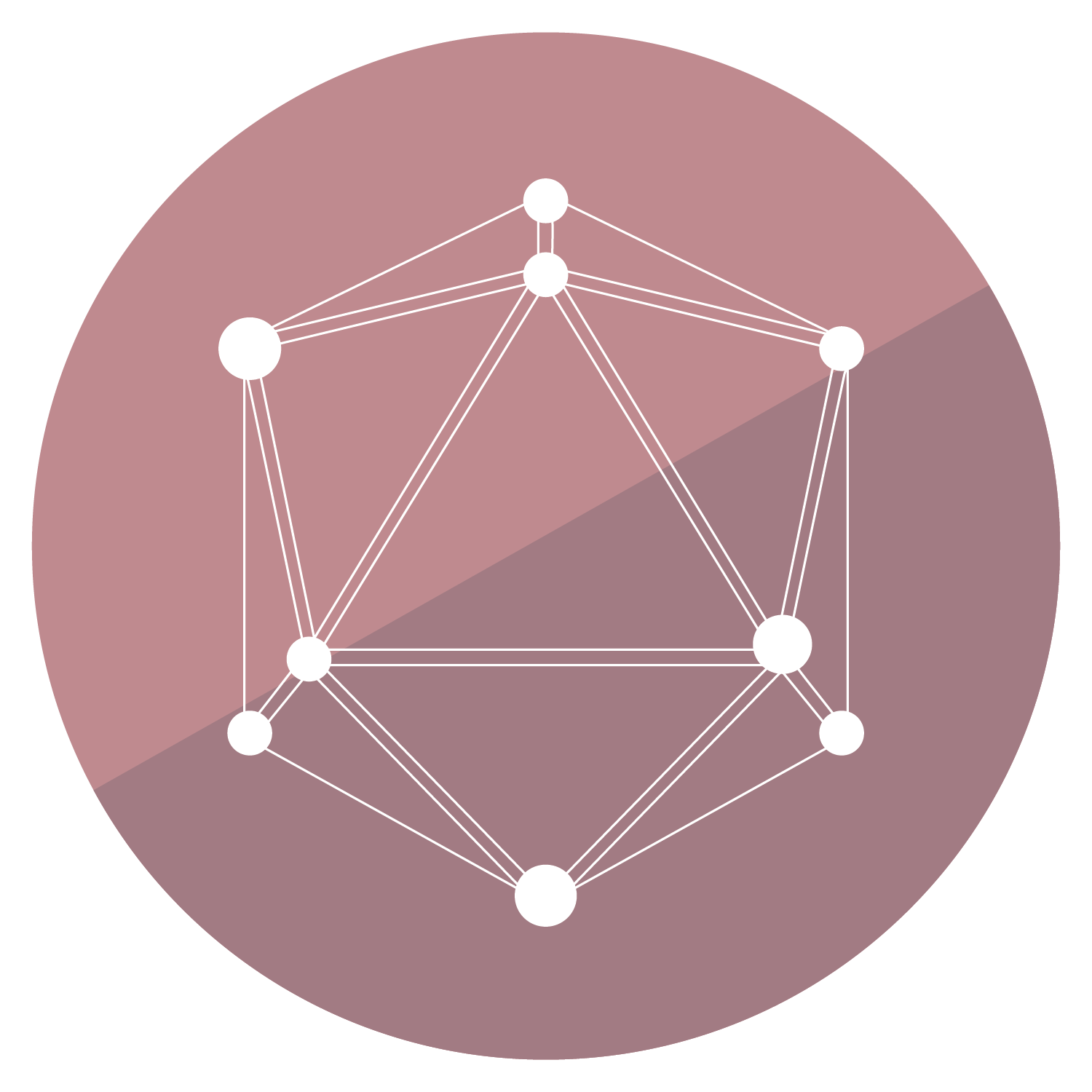
Spatial Relations
Visualize, rotate, and manipulate 3D objects in mind or draw alternative perspectives.

Language Usage
Ability to easily comprehend complex documents and context within text.

Aptitude Mix
-
 Verbal Reasoning
Verbal Reasoning
-
 Numerical Ability
Numerical Ability
-
 Mechanical Reasoning
Mechanical Reasoning
-
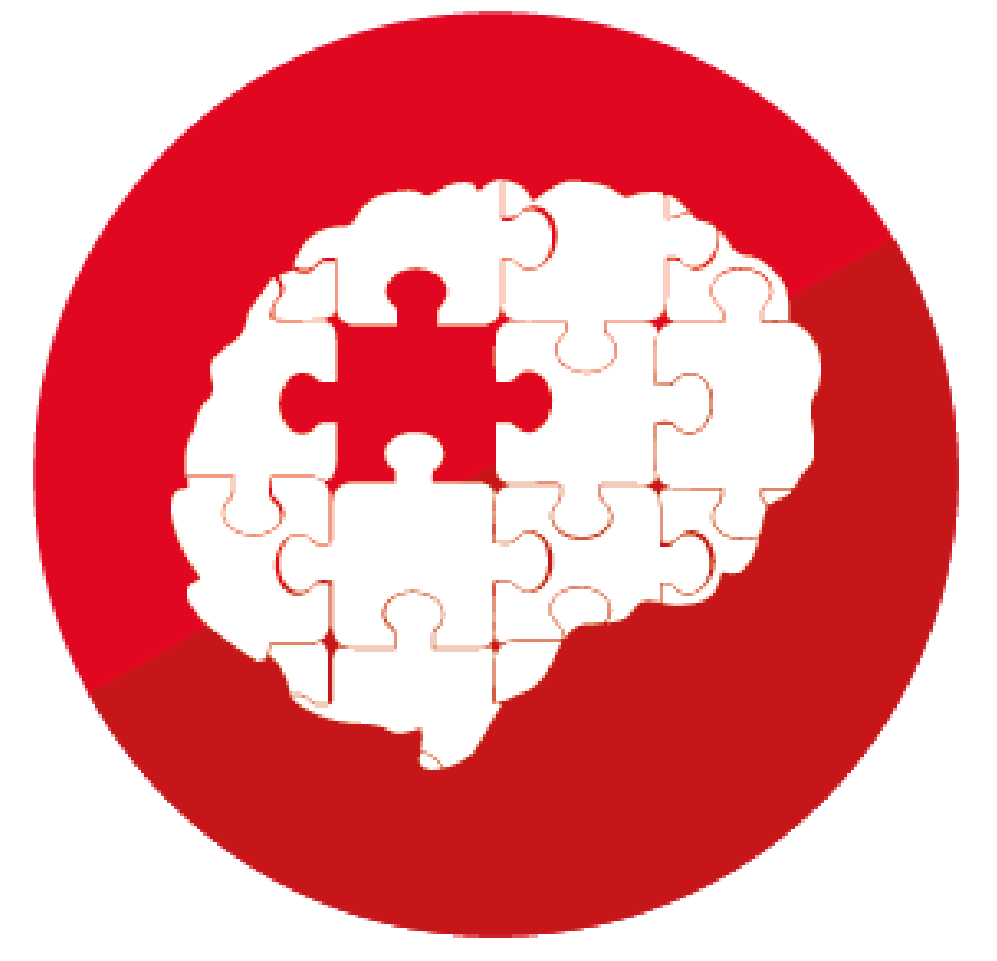 Abstract Reasoning
Abstract Reasoning
-
 Space Relations
Space Relations
-
 Language Usage
Language Usage

Verbal or Analytical Reasoning
Verbal Reasoning refers to the ability to think logically and solve problems using language. It involves organizing and understanding ideas without needing detailed step-by-step instructions. People with strong verbal reasoning skills are excellent at interpreting written material, understanding complex texts, and drawing conclusions from verbal information. This aptitude is essential for careers where communication is key, such as in law, education, business, and management. It allows individuals to analyze and apply logic to solve problems, and is often a strong indicator of success in tasks that involve reading, writing, and verbal expression.
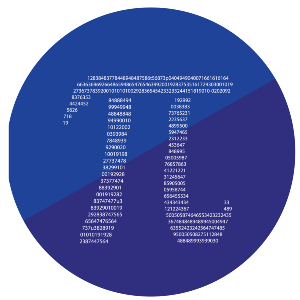
Numerical Ability
Numerical Ability is the capacity to think quantitatively and appreciate relationships between numbers. It includes skills such as performing arithmetic calculations, understanding mathematical relationships, and applying numbers in real-life situations. This aptitude is essential in fields like science, engineering, finance, and business. A high numerical ability is also crucial for professions that involve analyzing data, such as accounting, economics, and mathematics. People with strong numerical abilities can process and interpret numbers quickly and accurately, making them highly effective in roles that require data analysis and financial decision-making.
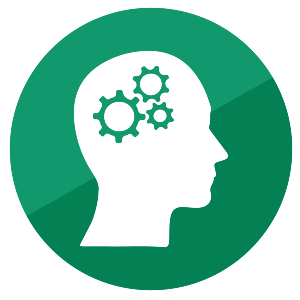
Mechanical Reasoning
Mechanical Reasoning is the ability to understand how things work by applying principles of mechanics and physics. This aptitude is important for understanding and working with machines, tools, and systems. It is essential in careers such as engineering, industrial design, mechanical repair, and technical maintenance. People with strong mechanical reasoning abilities are able to comprehend how different parts of a machine or system work together and solve problems related to machinery. This aptitude is often associated with professions like motor mechanics, aero-engineering, and construction. High scores in mechanical reasoning indicate an intuitive understanding of mechanical principles and systems.
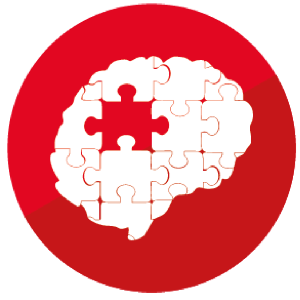
Abstract Reasoning or Lateral Thinking
Abstract Reasoning refers to the ability to think in non-literal terms, recognizing patterns and relationships among abstract concepts. This aptitude is crucial for jobs that require problem-solving and innovation, such as software design, engineering, mathematics, and science. It involves synthesizing information, making connections between seemingly unrelated ideas, and applying logical reasoning to solve complex problems. Those who score highly in abstract reasoning are often able to work with complex ideas and concepts, making them well-suited for roles that involve strategy, innovation, and conceptual thinking.
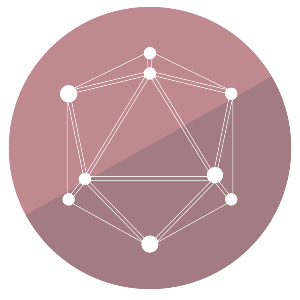
Space or Spatial Relations
Space Relations is the ability to visualize and manipulate objects in three dimensions. This aptitude is essential for careers in architecture, engineering, design, and other fields that involve spatial reasoning. It includes the ability to understand how objects relate to each other in physical space and mentally rotate, manipulate, or reassemble them. Those with strong spatial abilities excel in tasks that require design, drawing, and constructing visual representations. This skill is particularly important in professions like architecture, industrial design, and graphic design, where visualizing how objects fit together or change orientation is a key part of the job.

Language Usage
Language Usage refers to the ability to use language effectively, both in written and verbal communication. It includes skills such as vocabulary development, comprehension, grammar, and the ability to express ideas clearly. This aptitude is crucial for careers in teaching, writing, journalism, law, public speaking, and any role that requires effective communication. People with strong language usage skills excel at reading comprehension, editing, and producing clear, well-structured written material. They can also use language creatively and persuasively, making them successful in roles where communication is central, such as in the media, public relations, and content creation.

PIE Inventory
The PIEI (Personal and Interpersonal Effectiveness Inventory) is a comprehensive assessment tool designed to measure an individual’s competence across four key domains: Personal, Relational, Environmental, and Existential. Each domain encompasses essential skills and abilities necessary for effective functioning in both personal and social contexts, as well as in navigating external challenges and finding deeper meaning in life.
What is PIE Inventory?
The PIEI (Personal and Interpersonal Effectiveness Inventory) is a comprehensive assessment tool that evaluates an individual’s competence across four key domains: Personal, Relational, Environmental, and Existential. It measures essential skills such as self-awareness, relational abilities, adaptability, and purpose-driven behaviors, offering valuable insights into an individual’s ability to function effectively in personal and social contexts, as well as navigate external challenges and find deeper meaning in life.
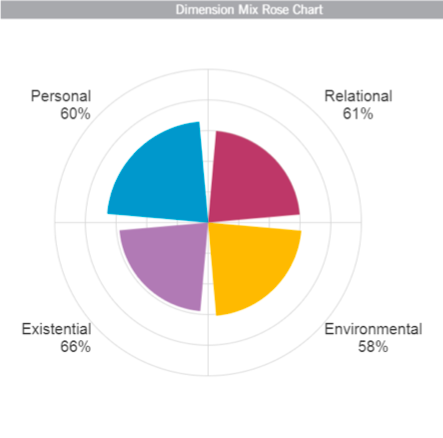
How does PIEI help Individuals & Teams?
The PIE Inventory helps individuals enhance personal growth by improving self-regulation, decision-making, and emotional intelligence. It fosters healthy relationships by assessing empathy, communication, and conflict resolution skills. It promotes environmental mastery by evaluating adaptability and proactive behaviours, ensuring individuals can thrive in diverse settings. Additionally, the PIE Inventory supports existential fulfilment by helping individuals explore their purpose, motivation, and engagement, leading to a deeper sense of contentment and meaning. This holistic approach aids both personal development and effective collaboration within teams, creating stronger, more resilient individuals and cohesive teams.

PIE Inventory Overview:
Purpose: PIE Inventory’s purpose is to provide a structured approach to understanding and evaluating an individual’s capabilities in below four domains. By assessing self-awareness, relational skills, adaptability, and purpose-driven behaviours, PIE Inventory aims to:
- Enhance Personal Growth: Helping individuals better understand their cognitive ٴ emotional proficiencies, leading to improved self-regulation, decision-making, and personal development.
- Foster Healthy Relationships: Measuring interpersonal skills such as empathy, communication, and conflict resolution to promote authentic and effective social connections.
- Promote Environmental Mastery: Evaluating adaptability, proactive behaviors, and decision-making skills to ensure individuals can successfully navigate and thrive in various environments.
- Support Existential Fulfillment: Exploring purpose, motivation, and self-controlled engagement to enable individuals to find meaning in life and experience contentment.
Goal: The goal of PIE Inventory is to empower individuals with insights into their strengths and areas for growth across these dimensions, supporting them in achieving balance, resilience, and meaningful connections in both their personal and professional lives.

PIE Inventory Domains
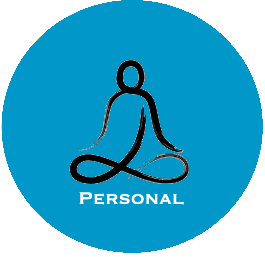
Personal
Focuses on self-awareness, emotional intelligence, and personal growth, empowering individuals to manage their thoughts, emotions, and behaviors effectively.
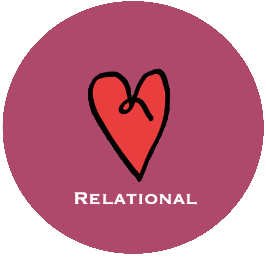
Relational
Assesses interpersonal skills such as communication, empathy, and conflict resolution, enabling individuals to build strong, authentic connections with others.

Environmental
Measures adaptability and proactive behaviors, helping individuals navigate and succeed in various environments and challenges.

Existential
Explores purpose, motivation, and engagement, guiding individuals towards finding meaning in life and achieving greater fulfillment and contentment.
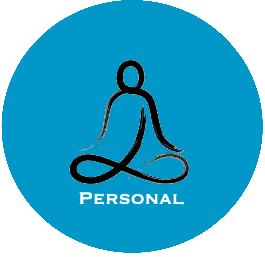
Personal
Personal domain encompasses psychological skills that empower individuals to comprehend, embrace, and navigate their thoughts, emotions, and behaviours effectively amidst a variety of life situations and experiences. Here are the three dimensions to this assessment domain:
Self Acceptance: Self-Acceptance, as a skill, involves recognizing one’s abilities, preferences, and goals, wholeheartedly embracing both limitations and faults, and maintaining a stable sense of self-worth.
Positive Mindset: Positive Mindset is characterized by a psychological and emotional attitude that allows individuals to focus on the positive aspects of life and express gratitude for their blessings.
Constructive Coping: Constructive Coping signifies the capacity to mindfully experience and express emotions during challenging situations, and transform negative thoughts into positive ones.
Color: Deep Blue;
Meaning: Stability, Trust, Wisdom;
Explanation: Deep blue represents inner wisdom, stability, and trust in oneself. It signifies depth and introspection, aligning well with the personal domain of self-reflection and understanding.

Relational
Relational domain involves the competence to manage authentic and healthy relationships with others. It emphasizes understanding different viewpoints, expressing thoughts coherently, and resolving conflicts constructively, enabling individuals to foster genuine connections and navigate interpersonal interactions effectively. Here are the three dimensions to this assessment domain:
Perspective Taking: Perspective taking involves the ability to empathetically understand the emotions and thoughts of others in various situations, coupled with a deep respect for diverse opinions and perspectives.
Coherent Communication: Coherent Communication entails the skillful use of both verbal and non-verbal communication methods, grounded in a deep understanding of the context, audience, and objectives of conversations.
Conflict Resolution: Conflict Resolution involves the ability to manage and resolve disagreements constructively, focusing on understanding differing viewpoints, facilitating open communication, and finding mutually acceptable solutions to maintain positive relationships.
Significance of Logo:
Color: Warm Red;
Meaning: Growth, Harmony, Balance;
Explanation: Warm green symbolizes growth, harmony, and balance in relationships. It represents nurturing, empathy, and interconnectedness, reflecting the relational aspects of human connections.

Environmental or Situational Mastery
Environmental or Situational Mastery refers to the ability to navigate diverse settings successfully, making informed decisions, taking proactive initiatives, and demonstrating adaptability. Here are the three dimensions to this assessment domain:
Decision Making: Decision Making is the capacity to select options, devise solutions, or create processes by employing a blend of logic and creativity.
Proactivity: Proactivity involves a proactive and future-oriented approach, driving initiatives for both personal and collective development.
Adaptability: Adaptability is characterized by a forward-looking and proactive mindset, driving initiatives for both personal and collective development.
Significance of Logo:
Color: Earthy Green and Brown;
Meaning: Nature, Stability, Sustainability;
Explanation: Earthy green and brown tones signify a connection to nature, stability, and sustainability. These colors evoke a sense of grounding, balance, and environmental awareness.

Environmental
Existential domain encompasses a profound sense of contentment derived from a purposeful life, self-driven motivation, and engagement-enhancing behaviors experienced by individuals. Here are the three dimensions to this assessment domain:
Purpose: Purpose is the profound recognition of one’s existence, rooted in the impact made in both personal and professional spheres, highlighting its significance and value.
Motivation: Motivation involves directing one’s behaviors and energy toward specific, attainable, and meaningful goals, driven by internal factors rather than external influences.
Engagement: Engagement involves concentrating on tasks with mental acuity and immersing oneself cognitively, emotionally, and physically in activities.
Significance of Logo:
Color: Earthy Green and Brown;
Meaning: Nature, Stability, Sustainability;
Explanation: Earthy green and brown tones signify a connection to nature, stability, and sustainability. These colors evoke a sense of grounding, balance, and environmental awareness.
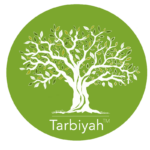
Tarbiyah Curriculum
The Tarbiyah Curriculum aims to nurture holistic growth in students by integrating core Islamic principles such as Tawhīd, Tazkiyah, and Hikmah. Through a structured approach, it fosters self-awareness, social responsibility, and God-consciousness, empowering students to develop as mindful, purpose-driven leaders who contribute positively to society.
What is Tarbiyah?
Tarbiyah is a comprehensive approach to nurturing personal growth through spiritual, moral, and intellectual development, guided by Islamic principles. The Tarbiyah Curriculum integrates assessments that help students reflect on their strengths, values, and responsibilities, fostering self-awareness, social consciousness, and God-consciousness. Through targeted assessments and experiential learning, Tarbiyah empowers individuals to cultivate character, leadership, and compassion, while aligning their actions with faith and contributing positively to their communities.

How does Tarbiyah help Individuals?
Tarbiyah helps individuals develop essential life skills, fostering self-awareness, emotional intelligence, and purpose-driven behaviour. It helps individuals in various profound ways:
1. Personal Growth: Enhances self-awareness and emotional intelligence, promoting resilience and continuous personal development.
2. Moral and Ethical Development: Instills Islamic values, guiding individuals to be more compassionate, empathetic, and mindful of their actions.
3. Spiritual Growth: Cultivates God-consciousness, helping individuals make faith-aligned decisions and find inner peace.
4. Social Responsibility: Encourages active engagement in communities, fostering empathy and a sense of responsibility towards others.
5. Leadership Development: Develops leadership skills rooted in compassion, integrity, and wisdom, empowering individuals to lead purposefully and ethically.
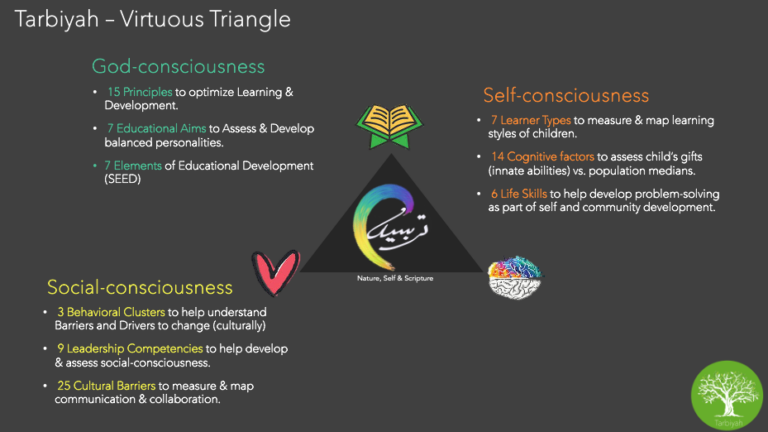
The Virtuous Triangle
The Virtuous Triangle represents the interconnected development of three core areas: Self-consciousness, Social-consciousness, and God-consciousness.
Self-consciousness is fostered through cognitive and behavioural self-assessments, enabling individuals to gain deep insights into their strengths, weaknesses, and personal growth areas. Social-consciousness is built through behavioural self-assessments and peer comparisons, supported by tools like the PIEI (Personal & Interpersonal Effectiveness Inventory), which evaluate interpersonal skills and social responsibility. Finally, God-consciousness is nurtured through the Tarbiyah self-assessment and the Tarbiyah curriculum for faculty, focusing on spiritual awareness, moral values, and the alignment of actions with Islamic principles.
Together, these three areas form a virtuous cycle, driving individuals towards holistic development and purposeful living.

Tarbiyah Curriculum Strands
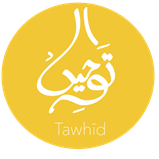
Tawhid
Triggering Curiosity: exciting youth through awe and wonder for signs of Allāh swt (The Creator).
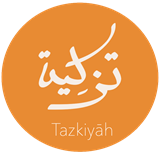
Tazkiyah
Building Character:
targeting morality through humility, inspiration, purpose and intention.

Hikmah
Instilling Contemplation: targeting cognitive development through a 4-stage process of discovery.

Istiqamah
Guiding Connections: solidifying discovery by creating real-world connections through testing.
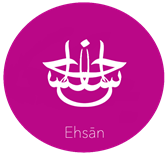
Ehsan
Supporting Collaboration:
multi-sensory sharing of what is learned through discovery with others

Din
Helping Cultivation:
finding ways to apply what has been learned within their lives (transformation).
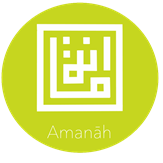
Amanah
Creating Care:
final stage would be to allow students to apply what they have adapted for good of others.
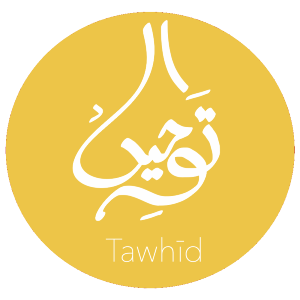
Tawhīd (Oneness of Allāh swt)
Triggering Curiosity: exciting youth through awe and wonder for signs of Allāh swt (The Creator).
Tawhīd is the foundational concept of Islam, emphasizing the belief in the absolute Oneness of Allah. It is the basis for all other aspects of faith and action. Understanding Tawhīd leads to aligning one’s actions and intentions with Islamic principles, fostering a life of worship and dedication to Allah.
Reverence (Awe & Wonder) represented as Awe and Wonder in Allah by being a Perceptive Observer of His Signs, being a Curious Explorer and in Awe of Allah’s existence.
Wholeness (Systems Perspective) represented as taking a Systems perspective and having a Holistic and Unified Approach towards Allah’s existence.
Conviction (Belief System) represented as a Belief System for someone who is a Faithful Believer, Dutiful Servant, Spiritual Devotee.
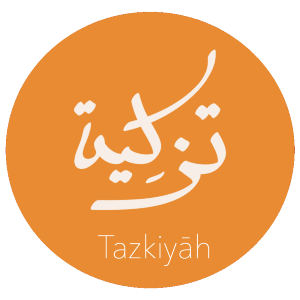
Tazkiyah (Purification of the Heart)
Building Character: targeting morality through humility, inspiration, purpose and intention.
Tazkiyah refers to the process of purifying the soul from negative traits and developing noble character. It involves self-reflection, overcoming personal flaws, and cultivating virtues such as sincerity, humility, and patience. Through Tazkiyah, individuals strive for moral and spiritual growth, aligning their actions with their faith.
Self-Awareness (Identity) represented as Self-awareness of one’s Identity, Self-reflective of ones Values (Virtuous) and Self-confident.
Compassion (Conscience) represented as someone who is Conscientious, Compassionate and values kindness with justice.
Conviction (Uprightness) represented as someone who is Upright, Balanced, Self-disciplined and carry a high degree of commitment to Moral Action.

Hikmah (Wisdom)
Instilling Contemplation: targeting cognitive development through a 4-stage process of discovery.
Hikmah is the pursuit of wisdom through knowledge, reflection, and experience. It involves understanding Islamic teachings, applying them responsibly, and making sound decisions that benefit both oneself and society. With a purified soul and a strong foundation in faith, individuals can seek Hikmah to navigate life with understanding and clarity.
Competence (Learning Skills) represents Learning Skills via being Inquisitive (Knowledge Seeker), Studious, and Competent in researching new concepts and ideas.
Knowledge (Knowledgebase) represented as who is Metacognitive, Knowledgeable and can develop an Integrated Perspective.
Problem Solving (Thinking) represents someone’s overall thinking ability as Critical Thinking, Creative Thinking (Originality) and Problem-solving.
Understanding (Wisdom) represented as someone who is a Pattern Seeker, has a Deep Understanding and a strong Decision-maker.
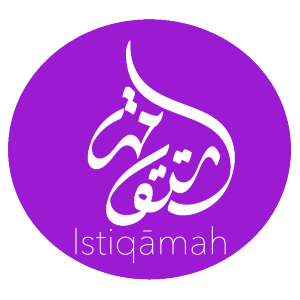
Istiqamah (Steadfastness)
Guiding Connections: solidifying discovery by creating real-world connections through testing.
Istiqamah is the ability to remain steadfast in one’s faith and practices, regardless of challenges or temptations. It emphasizes perseverance and consistency in striving to live according to Islamic values, maintaining one’s commitment to Allah and the principles of Islam throughout life.
Wholesome & Healthiness (Healthy) represented as someone who prefers to remain Healthy, Clean, Safe and Secure.
Wellness (Fitness) represented as someone who prioritizes Fitness, has a balanced routine and is Athletic (Exercises).
Vitality (Recreation) represented as someone who likes recreation and prefers being Rejuvenated, Enriched and Fulfilled through their routine.

Ihsān (Doing Good to Others)
Supporting Collaboration: multi-sensory sharing of what is learned through discovery with others.
Ihsān is the principle of performing acts of kindness and excellence towards others. It goes beyond fulfilling duties to treating others with respect, compassion, and integrity. By practicing Ihsān, individuals contribute positively to their communities and ensure their actions reflect the highest standards of morality and ethical conduct.
Understanding (Communication) represented as someone who is an Active Listener, has Clarity of Expression and can interpret and evaluate others.
Cooperation (Relationships) represented as being Sharing, Cooperative, Harmonious, Respectful towards Diversity and Empathetic.
Friendliness (Belonging) represented in someone being Friendly, Sociable and high on Belonging.

Din (Faith in Action)
Helping Cultivation: finding ways to apply what has been learned within their lives (transformation).
Dīn refers to the active practice of one’s faith in daily life. It encompasses worship (ibadah), adherence to Islamic laws, and the application of ethical principles in all actions. Dīn ensures that faith is not just an abstract belief but is reflected in one’s behaviors and interactions with others, shaping a life aligned with Islamic teachings.
Inspiration (Heritage) represented as someone who is inspired by Heritage, is fairly Enriched and Aesthetically Sensitive.
Integrity (Lifestyle) represented as Lifestyle via Integrity, Commitment, Persistence, and High Standards (Work Habits).
Courage (Change & Challenges) represented as someone who is Adaptive to Change and Challenge, is Flexible, can manage Stress and is a risk-taker.
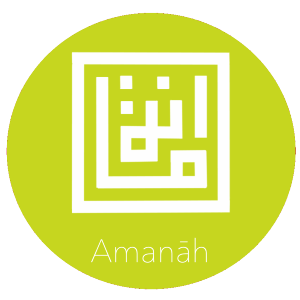
Amanah (Public Service)
Creating Care: final stage would be to allow students to apply what they have adapted for good of others.
Amanah is the concept of fulfilling one’s responsibilities to society with trustworthiness and dedication. It includes using one’s knowledge and skills for the benefit of others, promoting the well-being of the community, and contributing to social justice. Amanah calls individuals to act with integrity and serve humanity through ethical leadership and action.
Justice (Stewardship) represented as someone who is Just, Peaceful, has a Global Perspective and carries Environmental Awareness.
Responsibility (Service) represented as someone who is Service Oriented, is an Activist (Citizenship) and is Caring and Responsible.
Example ship (Leadership) represented as someone who is a Role Model, can Lead by Example and inspire others (Da’wah).
Reports
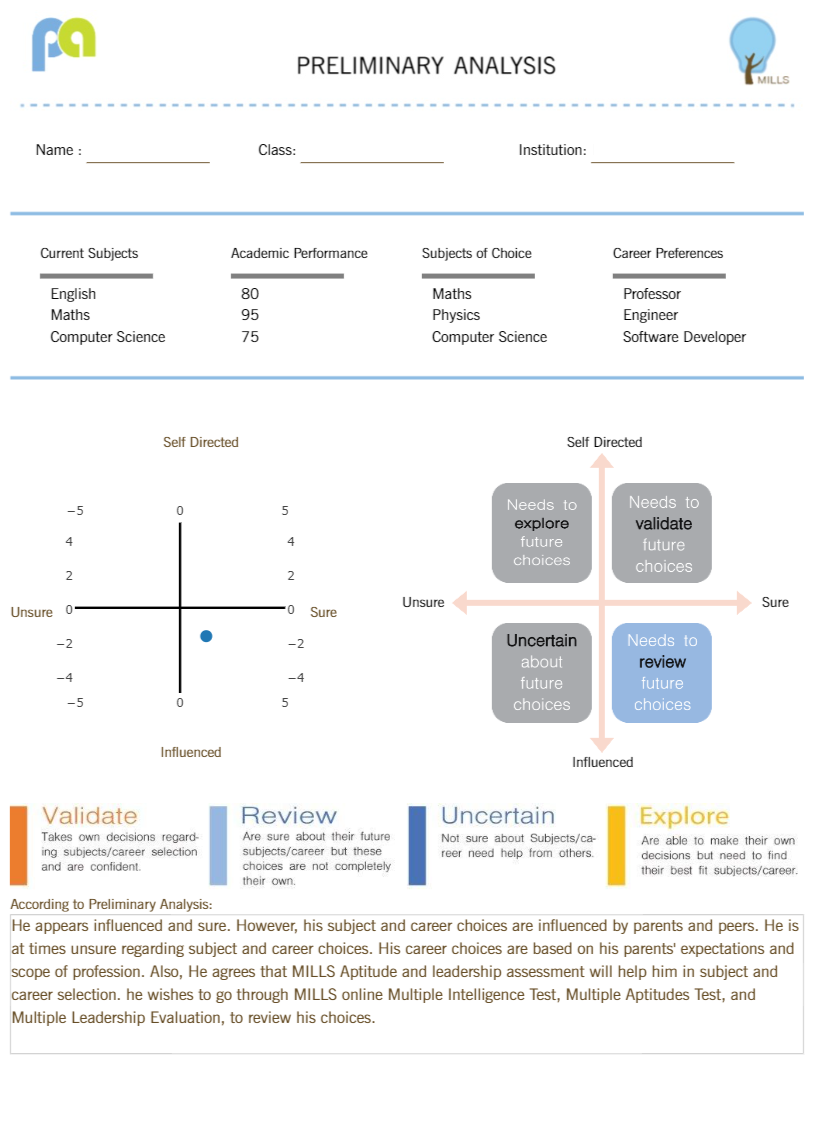
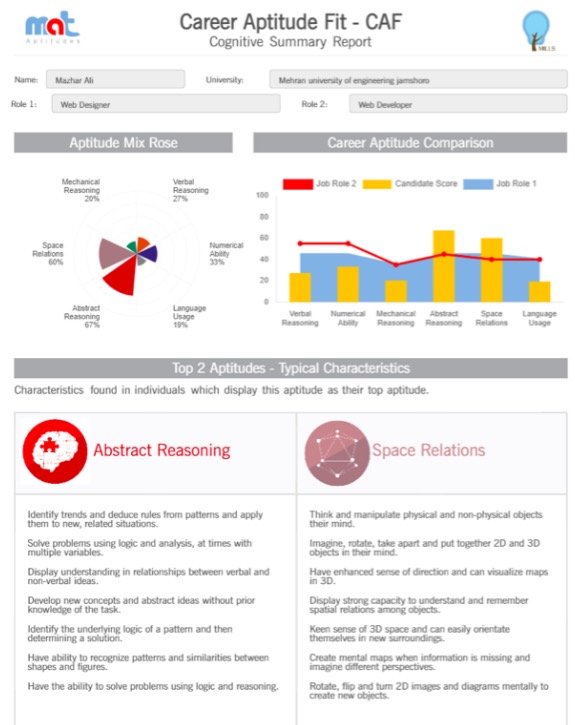



 Ihsān
Ihsān